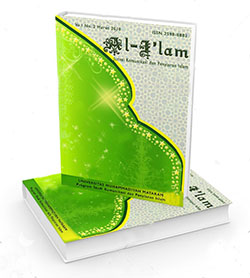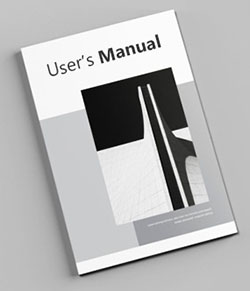Pengaruh Motif Diversi Terhadap Self-Disclosure Pengguna Akun Twitter Autobase @Ngalamfes
Abstract
Twitter merupakan media sosial yang memungkinkan penggunanya untuk saling mengirim dan membaca pesan berdasarkan satu sama lain. Dalam praktiknya, media sosial Twitter juga rentan terhadap risiko kebocoran privasi, sehingga muncul fenomena akun Autobase yang merupakan akun yang menjadi tempat berkumpulnya para pengguna Twitter untuk bertanya atau bertukar informasi dengan sifat anonim. Sifat anonim menjadi ruang lingkup baru dimana pengguna tidak dapat dikenali oleh pengguna lain dan memiliki kebebasan untuk berekspresi tanpa ada tekanan. Hal ini juga didukung dengan usia para pengikut akun autobase dengan rentang usia 18-34 tahun dimana pada usia tersebut mereka lebih memilih untuk menceritakan masalah pribadinya secara anonim di akun autobase. Komunikasi yang dilakukan pada akun autobase @Ngalamfess didasari oleh motif pengalihan yang di dalamnya juga terdapat aspek pengungkapan diri. Tujuan dari penelitian ini adalah untuk mengetahui pengaruh motif pengalihan terhadap pengungkapan diri pengguna akun autobase @Ngalamfess di twitter. Metode penelitian yang digunakan adalah metode korelasi dengan paradigma postivistik dan teknik pengambilan sampel purposive sampling. Hasil dari penelitian ini Adanya hubungan dan tingkat kekuatan pada variabel-variabel dalam penelitian ini dapat dilihat dari Uji Korelasi antara Motif Pengalihan (X) dengan Self Disclosure (Y) dengan nilai signifikansi sebesar 0.00 < 0.05, sehingga dinyatakan terdapat hubungan antara keduanya dan nilai korelasi product moment menunjukkan hasil 0,472 yang dapat dilihat pada tabel tingkat koefisien korelasi bahwa 0,472 berada pada rentang 0,40-0,599 yang tergolong sedang.
Abstract:
Twitter is a social media that allows users to send and read messages based on each other. In practice, Twitter social media is also vulnerable to the risk of privacy leaks, so the phenomenon of Autobase accounts is an account that is a gathering place for Twitter users to ask questions or exchange information with anonymous nature. The anonymous nature becomes a new scope where users cannot be recognized by other users and have the freedom to express themselves without pressure. This is also supported by the age of the followers of the autobase account with the age range of 18-34 years where at that age they prefer to tell their personal problems anonymously on the autobase account. Communication carried out on the @Ngalamfess autobase account is based on diversionary motives in which there are also aspects of self-disclosure. The purpose of the study was to determine the effect of diversionary motives on self-disclosure of autobase @Ngalamfess account users on twitter. The research method used is a correlation method with a postivistic paradigm and purposive sampling technique. The results of this study The existence of a relationship and the level of strength in the variables in this study can be seen from the Correlation Test between Diversion Motive (X) and Self Disclosure (Y) with a significance value of 0.00 <0.05, so it is stated that there is a relationship between the two and the value of the product moment correlation shows the result of 0.472 which can be seen in the correlation coefficient level table that 0.472 is in the range of 0.40-0.599 which is moderate.Keywords
Full Text:
PDF (Bahasa Indonesia)References
Azra, A. (1999). Pendidikan Islam: Tradisi dan Modernisasi. Logos Wacana Ilmu.
Cholid, N. (2021). Pendidikan Ke-Nu-an Konsepsi Ahlussunnah Waljamaah Annahdliyah. CV Presisi Cipta Media.
Cloete, A. L. (2016). Mediated religion: Implications for religious authority. Verbum et Ecclesia, 37(1), 1–6.
Fatmawati, M. S. (2019). Women’s Political Rights in Islamic Law Perspective (Analysing the Implementation in Indonesian Political System). WESTECH 2018: Proceedings of 1st Workshop on Environmental Science, Society, and Technology, WESTECH 2018, December 8th, 2018, Medan, Indonesia, 421.
Haq, M. I., & Rifai, I. A. (2018). Internet Dalam Bingkai Dakwah Organisasi Nahdlatul Ulama. Journal of Chinese Philosophy, 30(2), 159–175.
Hew, W. W. (2018). THE ART OF DAKWAH: social media, visual persuasion and the Islamist propagation of Felix Siauw. Indonesia and the Malay World, 46(134), 61–79.
Husna, Z. Z. (2021). Perkembangan Dakwah melalui Media Sosial Instagram. Ath Thariq Jurnal Dakwah Dan Komunikasi, 5(2), 197–208.
Iskandar, D. (2009). Metodologi penelitian pendidikan dan sosial (kuantitatif dan kualitatif). Gaung Persada Press.
Ismail, H. F. (2020). NU, Moderatisme, dan Pluralisme: Konstelasi Dinamis Keagamaan, Kemasyarakatan, dan Kebangsaan. IRCiSoD.
Jinan, M. (2012). new media and the shifting of muslim religious authority in contemporary Indonesia. Conference Proceedings Annual International Conference on Islamic Studies XII, IAIN Sunan Ampel Surabaya Indonesia, 5–8.
Kiptiyah, S. M. (2017). The Celebrity’s Kyai And New Media. Jurnal Masyarakat & Budaya, 19(3), 339–352.
Kusuma, R. S. (2018). Religious authority and social media: Indonesian da’i use of Facebook. International Conference on Islam and Muslim Societies (ICONIS), 231.
Lubis, M. S. I. (2021). Teknologi informasi dan komunikasi dalam perspektif islam. Publik Reform, 8(1), 79–88.
Lundby, K., & Evolvi, G. (2021). 20 Theoretical frameworks for approaching religion and new media. Digital Religion: Understanding Religious Practice in Digital Media, 233.
Mulyana, D. (2003). Metodologi Penelitian Kualitatif (Paradigma baru ilmu komunikasi dan ilmu sosial lainnya). Remaja Rosdakarya.
Qomar, M. (2002). NU" liberal": dari tradisionalisme ahlussunah ke universalisme Islam. Mizan.
Rachmadhani, A. (2021). Otoritas Keagamaan di Era Media Baru: Dakwah Gusmus di Media Sosial. Panangkaran: Jurnal Penelitian Agama Dan Masyarakat, 5(2), 150–169.
Ridho, A., Rifa’i, A., & Sujud, M. (2022). Jagat Dakwah Nahdlatul Ulama: Dakwah Berbasis Teknologi dan Informasi di Era Digitalisasi dan Disrupsi. AL-MUNAZZAM: Jurnal Pemikiran Dan Penelitian Manajemen Dakwah, 2(2), 1–14.
Rohmah, N. N. (2024). Lansia Menyikapi Misinformasi. Journal of Islamic Communication Studies, 2(1), 20–32. https://jurnalpps.uinsby.ac.id/index.php/JICOS/article/view/521
Rumadi, R. (2012). Islam dan otoritas keagamaan. Walisongo: Jurnal Penelitian Sosial Keagamaan, 20(1), 25–54.
Sugiyono. (2022). Metode Penelitian Kuantitatif, Kualitatif, dan R&D – MPKK (Cetakan 4). Alfabeta.
Watson, C. W. (2005). A popular Indonesian preacher: the significance of Aa Gymnastiar. Journal of the Royal Anthropological Institute, 11(4), 773–79
DOI: https://doi.org/10.31764/jail.v7i2.22567
Refbacks
- There are currently no refbacks.
Copyright (c) 2024 Novi Ratriningtyas, Irfani Zukrufillah, Jauhar Wahyuni, Agnes Sesar MR

This work is licensed under a Creative Commons Attribution-ShareAlike 4.0 International License.
Al-I’lam: Jurnal Komunikasi dan Penyiaran Islam
Fakultas Agama Islam Universitas Muhammadiyah Mataram.
Alamat Redaksi:
Jln. KH. Ahmad Dahlan No. 1 Pagesangan – Mataram
Telpon 085946008096 | email: [email protected]
INDEXED BY:

.png)
2.png)


























